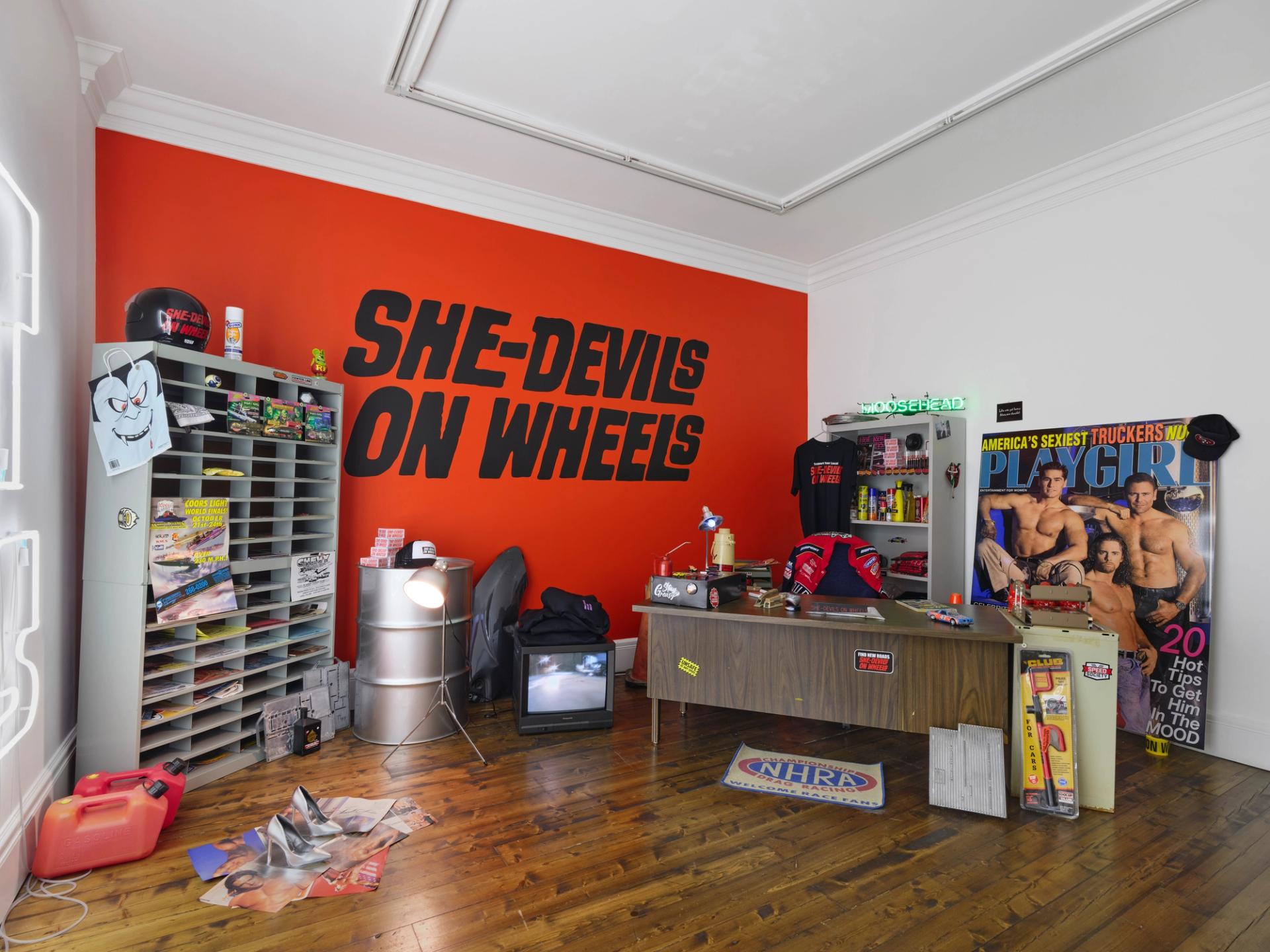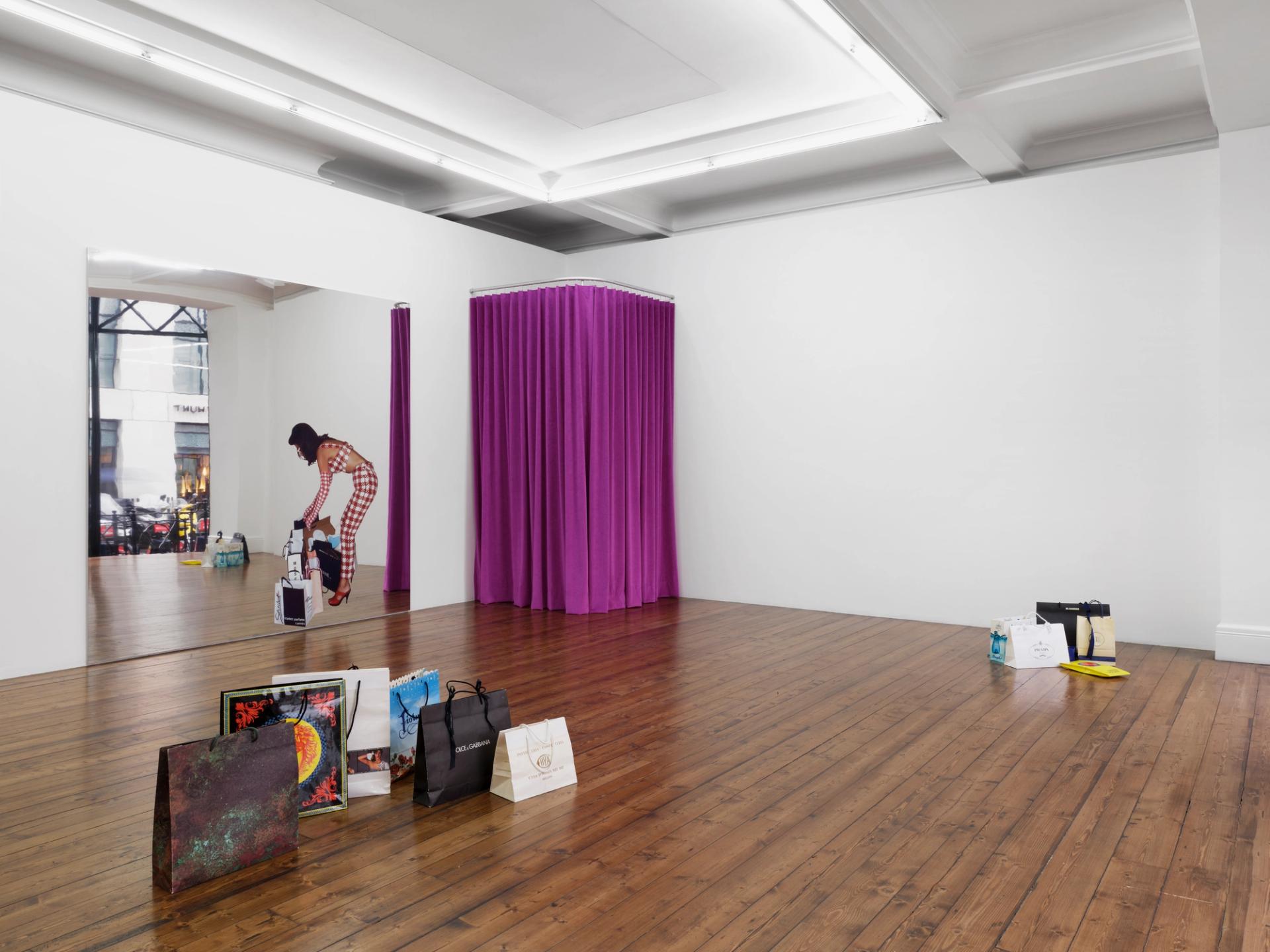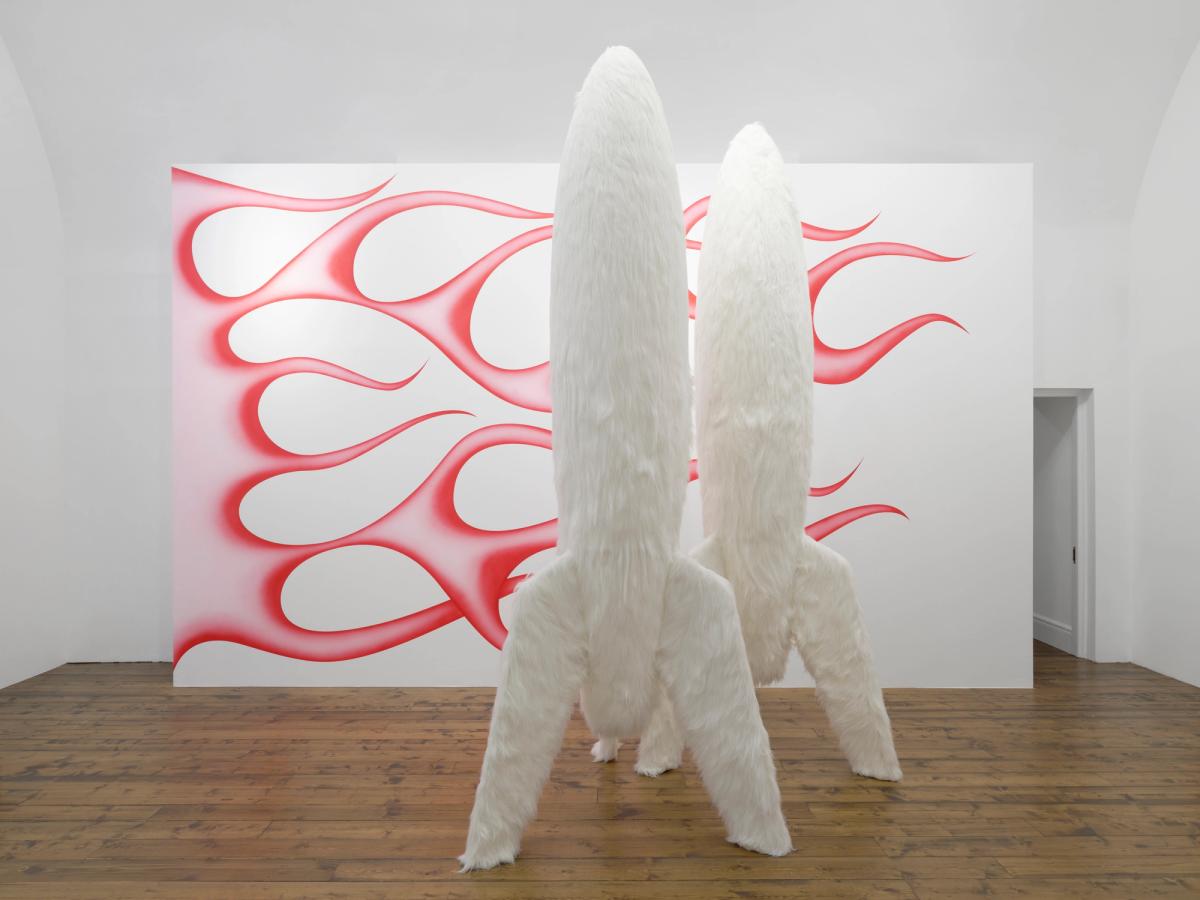The Swiss artist Sylvie Fleury, whose 30-year career has been marked by prescient takes on consumer culture, is showing a selection of pieces at Sprüth Magers gallery in London spanning the years (until 4 November). "It started with this idea of doing a little celebration. Philomene [Magers, gallery co-founder] and I started together with my first solo show 30 years ago,” Fleury says.
Pieces on show include ephemera from the celebrated She-Devils on Wheels, a women-only motoring club, founded by Fleury in the 1990s after being refused membership to a car-racing club. Also on view is First Spaceship on Venus (1995-today), a series that focuses on the idea of machismo around science fiction and outer space travel. “Creating rockets in a range of media, Fleury satirises their phallic symbolism by employing colours and materials associated with ‘femininity,”’ a gallery statement says.

Fleury's critique of self-improvement is still pertinent with text works such as Lush Lips (1997) which carries the message: “The latest on injections.” On the top floor of the gallery are further odes to self-love, consumerism and fashion such as the chromed Kelly Bag (crocodile), 2013.
What is it like seeing pieces together for the first time in decades? "It’s a bit like when you meet old friends you hadn’t seen in a long time. Happy to see them but surprised some have aged more than others. So I don’t feel it’s like a retrospective but more like another encounter,” she says.
The sprawling survey at Sprüth Magers crowns a busy period for Fleury who presented a vast show earlier this year at the Pinacoteca Agnelli space in Turin. “A ‘punk feminist in disguise’, as she calls herself, Fleury confronts the mechanisms of the production of desire and construction of value, and how they interact with gender politics.” the exhibition curators said.

Since the 1980s, Fleury has produced Pop art-inspired works that comment on gender politics and society's fascination with luxury goods. The ground floor of Sprüth Magers is littered with retro shopping bags and a mirror piece showing a woman (Fleury herself) in a chequered two-piece suit picking up a raft of designer shopping items (No Man’s Time, 2023).
“There was always the question of the clothing and the fashion which did not interest me very much fundamentally but which I used to say other things [rather] than 'I love shopping.'
I’ve always enjoyed investigating the mechanisms of our society [...] I think what is interesting [about the show] is showing all of this in a new light and seeing what happens,” the artist says.
Throughout the survey, Fleury references in her own way male conceptual artists such as Daniel Buren, Carl Andre and Michelangelo Pistoletto (the aforementioned mirror work references Pistoletto’s Mirror Paintings, 1963-today, while wall paintings of vertical stripes riff on the signature motif of Buren).
“I am just playing,” she says. “There was all this beautiful and chic Minimalism and I thought, let’s play with it. But it’s not intentional, it’s not about being nasty, maybe just a bit tenderly irreverent. This to me is a lot more about the idea of trends or for instance how some brands will take over artists’ works because they feel it can inject content. From the beginning I said I was interested in that crossover, for better or worse.”
For now she is savouring the moment in London at peak art time (the show opened during Frieze art week) while looking forward to a major show next year in Rotterdam. “It’s interesting to me the gallery wants to show my older pieces when I feel most galleries would want newer works. It’s a good challenge,” she adds.


